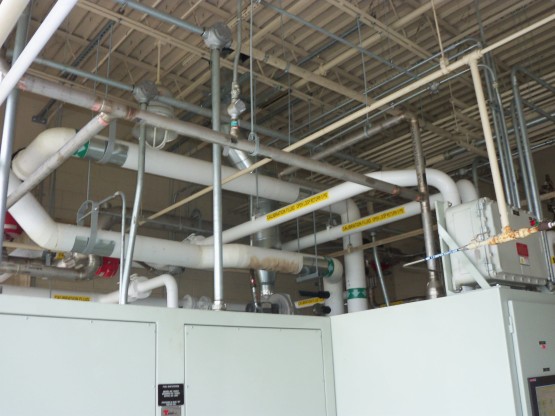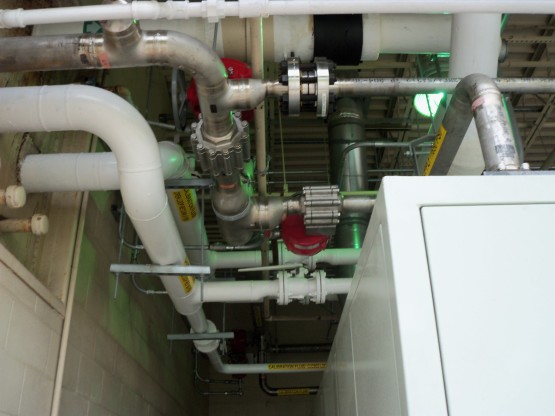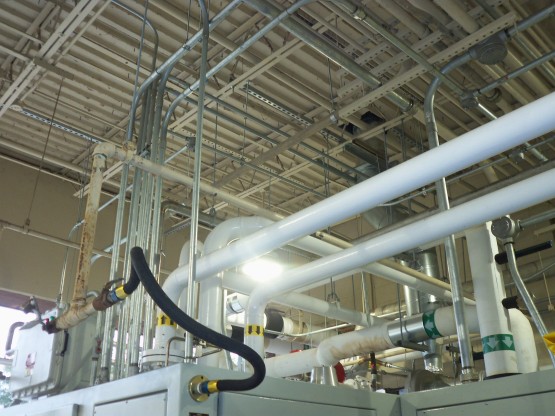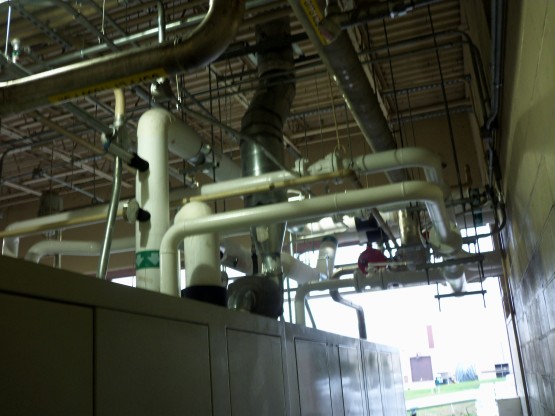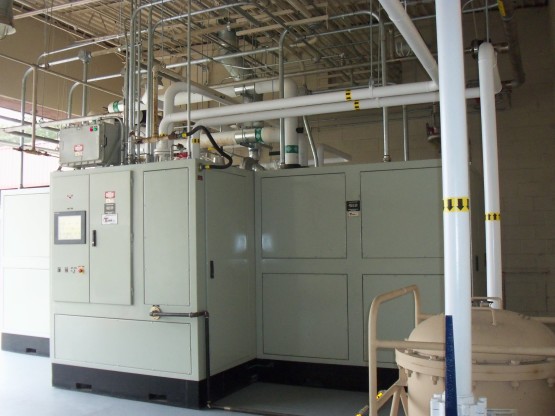Cape Design Engineering was responsible for a turnkey design, fabrication and installation of a new semi-automated, high pressure fuel skid system (FSS) and installation of new stainless steel supply distribution piping in the south section of building 795, Fleet Readiness Center Southeast (FRCSE) Jacksonville, Florida. The FSS is capable of delivering 400 gallons of calibration fluid (MIL-C-7024 Type II) per minute (GPM) at a line pressure of 1650 PSIG to eight test stands operating at full capacity with no interruptions. The new stainless steel supply distribution piping with test stand connection points were installed prior to the installation of the pump systems to negate operational down time. The FSS incorporated state-of-the-art electronic PLC controls that are easily supportable for the next 15 years and provide intuitive capacity management and control. CDE performed non-destructive X-Ray testing of all pipe welds. CDE provided complete training of system operations. A fuel/water separator was incorporated in the open loop return line to ensure water free calibration fluid. The calibration fluid has a flash point of 104°F, therefore, the pump skid was rated as a Class 1 Division 2 hazardous environment. All electrical components complied with the appropriate NEC requirements for a Class 1 Division 2 environment. Complete chilled water cooling system (47 °F water), 100 PSIG shop air pneumatic system, and 408 volt electrical distribution from MCC to power these systems were designed by CDE.
The benfits of the design include a highly reliable, fully automated, least maintenance cost fuel skid with the following features: Appropriate vibration dampening was employed to reduce stress on hardware. Commercial-Off-the-Shelf components were used in all instances. Pump, filter, valve placement, and orientation were geared toward ease of maintenance support and accessibility. Ensuring successful purge cycles during each start up was a challenge. CDE developed a sequence of operations, tested each one, and commissioned the systems to ensure that the purge cycle is successful without any damage to the system each time. A rupture disc rated to burst at 2000 PSI and a pressure relief valve were installed in each branch supply pipe and vented back to the open loop return pipe for additional safety. The FSS control system was configured to operate as a stand-alone system with fully redundant manual controls. The PLC manages the use of the available pumps to satisfy the instantaneous flow demand of the connected test stands.
